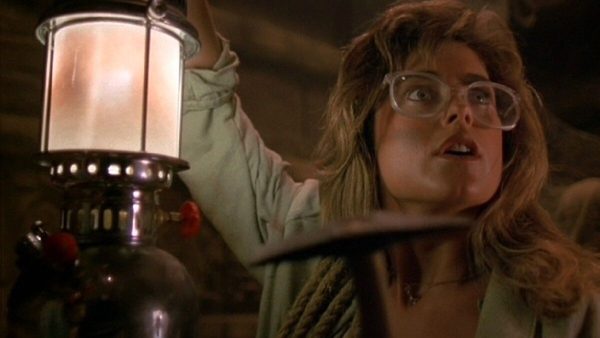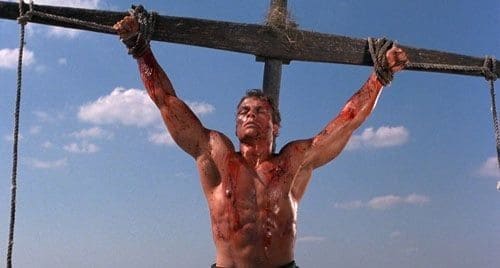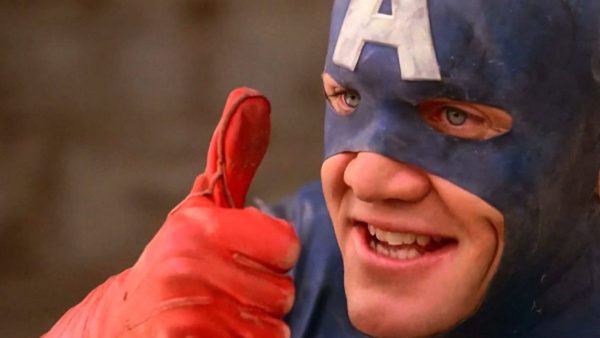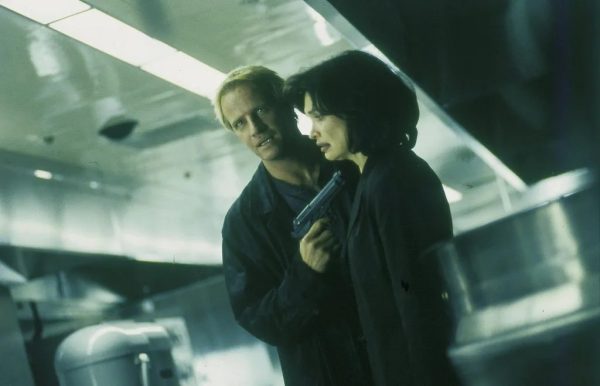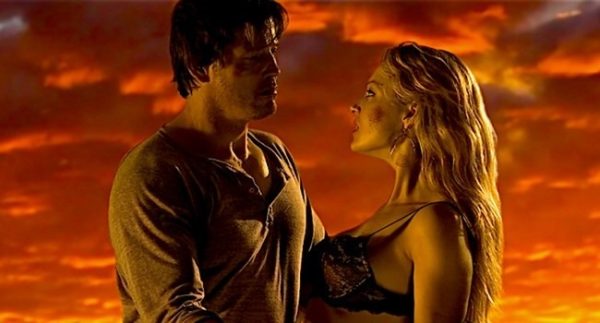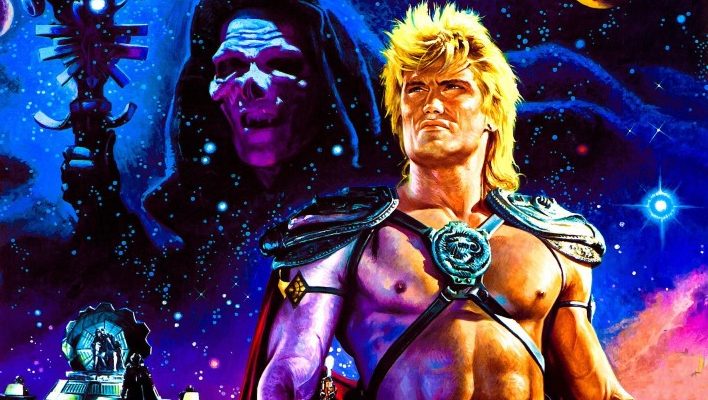With the sad news of Albert Pyun’s passing, we look back at the eclectic career of a B-movie legend…
Video-era movie buffs were hugely saddened by the news that Albert Pyun has left the mortal coil. For the uninitiated, Pyun was a director who became synonymous with B-movies. He had a penchant for post-apocalypse wastelands, cyborgs and wild flights of an auteur’s fancy. There was something so gleeful about the way Pyun approached movie-making. Even when the end results were erratic, or not brilliant, he still delivered something interesting. When he did hit the nail on the head with a film, he tapped into a sense of joyous insanity and a unique sense of artistic style for what were often films viewed as products by those financing. Pyun, for better (mostly) and occasionally worse, always put his inimitable stamp on a film. He never went for functional.
A Hawaii native, Pyun hopped military bases where his father was stationed during his younger days. His love of filmmaking began early, and like many, started on 8mm format. In high school he worked at production houses, crossing paths with Japanese acting legend, Toshiro Mifune (who invited him to Japan to study film). Pyun in fact was all set to intern for Akira Kurosawa on a film which never made it to production. Instead, he found himself learning under Takao Sato (for a Mifune TV series), one of Kurosawa’s cinematographers. In fact, if you look at some of Pyun’s shot composition and use of expansive and wide tracking shots, there’s a certain Kurosawa-esque influence there.
Then came Pyun’s big break. At a time when this sort of thing was more likely to happen, the relatively young director was given a Sword and Sorcery fantasy movie to direct. He co-wrote the screenplay. The film hit in a year also featuring Conan the Barbarian, where sword and sorcery suddenly became hugely lucrative. In actuality 1982 was probably the peak year with both The Sword and the Sorcerer and Conan becoming mega hits. In truth though, pound for pound, Pyun’s lower budget opus was even more profitable. It effectively marked his card early. It hadn’t been greeted too favourably by critics, but Pyun delivered a film that cost a fraction of its bigger budget Dino De Laurentiis’s cousin.
Armed with the kudos of opening his directorial career with a smash hit, Pyun then went and made a film that was (it would later come be confirmed) quintessentially Pyun. Radioactive Dreams is a quirky, slightly gonzo post-apocalyptic neo-retro gumbo of wild ideas. It’s a film that only Pyun and perhaps a select few others could have made. Two teens have been holed up in a bunker and finally come out into a post-nuclear wasteland. One of those teens is played by Michael Dudikoff. It would include many hallmarks that became Pyun staples, from vast desolate (read cheap) locations to slightly erratic storytelling. He wrote and directed it and it’s pure Pyun. It’s often been one difficult to source a good version of and is, perhaps more than any Blu-less Pyun joint, long overdue an HD spruce up. The quirkiness and irreverent humour would go down well today.
Dangerously Close was an underrated crime thriller, perhaps the most restrained of his career to that point, followed by Down Twisted which almost suggested Pyun was venturing away from fantasy and delving into action/crime cinema. This one is most memorable for featuring a young Courteney Cox. Pyun then about turned and delivered the sci-fi comedy, Alien From L.A. with Kathy Ireland where the model turned-actress travels to Africa and discovers a subterranean civilisation.
It was mauled by critics and by this point in his career, Pyun hadn’t quite matched his opening gambit for success. He’d continued delivering visually engaging low-budget cinema, but was often a little unfairly dismissed as the next Ed Wood. Despite the lapses in narrative cohesion on occasion and the erratic nature of these films, one thing that couldn’t be labelled at Pyun was a lack of filmmaking nous. The films looked great, even if perhaps they occasionally went wayward in the editing suite (particularly so on films taken from him, by cutsmen and producers who weren’t tuned to his wavelength).
Pyun’s unique sensibilities and ability to shoot on low budgets would inevitably see him cross paths with a couple of studios. Firstly, Cannon Films, and latterly he’d work with Charles Band at Full Moon. Cannon identified an intriguing mix of skilful low-budget manoeuvring, mixed with flair that made Pyun essential. He was tasked with a run of big-name properties like Masters of the Universe 2 and Spider-Man. As it happened, neither would come to pass due to budget problems and the fact Cannon were about to implode, causing a fraction between Golan and Globus.
However, Cannon sought to tap into Pyun’s deft handling of small budgets and asked him to create a film which could utilise sets and costumes already made for the doomed sequel to Masters of the Universe. Through that he created Cyborg, reverting back to the post-apocalypse. Cyborg, whether it’s the Cannon release or Pyun’s director’s cut, is as messy as it is eye-catching. It also featured Jean-Claude Van Damme on the cusp of his breakout having established himself already for Cannon with Bloodsport. Van Damme plays Gibson Rickenbacker, a drifter who helps a cyborg deliver a cure for the plague which has ravaged humanity. It jumps from scene to scene, without much coherence, but it’s also an intriguing blend of Mad Max, cyberpunk and martial arts. It’s also perhaps the most visually interesting Van Damme film of that era too.
SEE ALSO: Cyborg: When Jean-Claude Van Damme and Albert Pyun rode the Cannon Express
Pyun then got his chance to bring a Marvel character to life with Captain America. One of the Cannon offshoot companies, headed by Menahem Golan, put the film into production. As you’d expect it was somewhat reasonably financed but still someway short of the kind of money afforded to Tim Burton’s Batman. More was expected of the film, much like Dolph Lundgren’s The Punisher, and like that, it flitted between small theatrical releases, drifting out without much impact, or it headed straight to video in some territories. It’s a compilation of the best and worst of the Pyun project. Some of the irreverence and tonal shifts don’t always work and it can’t hide the budget in places, but in others (particularly a fairly solid opening sequence), it has that unshakable style. Ultimately the biggest thing working against it is a somewhat bland leading character, as played by Matt Salinger (not entirely his fault either).
Pyun would make a couple of specials for low-budget producer Charles Band. Dollman, featuring one of Pyun’s many stalwart actors, Tim Thomerson is an enjoyable slice of B movie fun as a 13 inch space detective heads to Earth and takes on crime. The locations, from derelict warehouses and sparse old industrial locales, are classic Pyun. The film never, like many of Pyun’s irreverent B pictures, takes itself too seriously. A few years later and Pyun made Arcade for Full Moon. The film tapped into a growing trend of VR themed movies, featuring a young Seth Green. Once again, Pyun’s visual style overcomes a shoestring budget, producing something expectedly gonzo that offers plenty of fun.
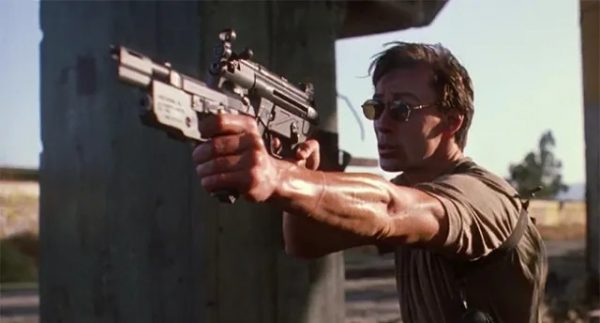
1992, a year prior to Arcade, and having also dipped his toe into tournament fighters with a Kickboxer sequel, Pyun made his masterwork. Nemesis honed elements from Cyborg, telling a similar story, but infusing the film with bigger action, bigger stunts and an early ode to the cinema of John Woo. Though the film drifts as it tells its story, Pyun’s visual flair is in full force. Gliding tracking shorts and an almost perpetually moving camera are the order of the day. French legit badass Olivier Gruner (ex-French Naval commando and kickboxing champ) stars in an attempt by the studio, Imperial Entertainment, to find a new Van Damme.
Though Nemesis is largely preoccupied with its plentiful (and insane) action sequences, it also has moments where Pyun wants to delve into philosophical questions about the nature of humanity. Still, from its barnstorming opening to a pyrotechnic-laden hotel shootout where Alex (Gruner) has to shoot himself down through four floors, Nemesis pumps itself up beyond its budget. It feels like a large-scale action film worthy of Bayhem and Woo.
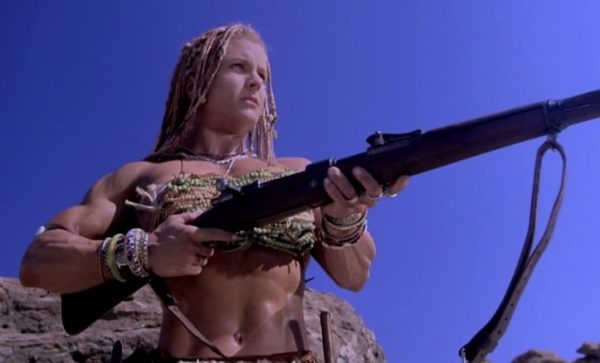
Three Nemesis sequels followed as Pyun’s career took interesting turns in the 90s. It seemed for one, that he was falling a little out of favour with projects of a certain budget level. In part, this was down to the demise of companies below the tentpoles who had historically made pictures for 5-10 million bucks. Fewer were existing, and though Nemesis was a big success (particularly on video) Pyun was getting hamstrung by bombs. Likewise, his need to implement his own style and sensibility in his films might have made him a difficult ‘gun for hire.’ The erratic nature of those cheap and sparse Nemesis sequels was perfectly emphasised when Pyun’s ideas didn’t quite translate from his mind to screen to audience. Nemesis 4: Cry of Angels is an incoherent mess, oddly fetishistic but additionally fascinating for its inherent Pyun-ness.
Other highlights of that period included a Christopher Lambert double whammy. Adrenalin: Fear the Rush was a slightly sloppy but enjoyable creature feature that also featured Natasha Henstridge (just shy of hitting it big with Species). Mean Guns might be the pick up his post-Nemesis bunch though, another quirky selection of creative choices by Pyun (like the Bossanova-infused musical numbers and high exposure cinematography) but it’s also an action-packed, ruthlessly simple concept where a group of assassins turn up to a building and get thrust into a last man/woman standing battle for a mega cash prize. It’s great fun and belies the undoubted budget constraints. It was a few years prior that Pyun co-founded the production company Filmwerks, seeking to take his career more firmly in his own hands, and the aforementioned Mean Guns and Nemesis sequels were part of his lineup (and why the films are nearer to being unfiltered Pyun).
Pyun’s career has often had mini-clusters of similarly themed fare. There’s a huge wealth of post-apocalyptic and/or cyborg flicks through the 90s, with Heatseeker, Knights, Nemesis 1–4, Omega Doom. You have a cluster of more conventional shoot-em-ups like Mean Guns, Hong Kong 97 (the inaugural Filmwerks flick) and Die Hard riff Blast (with Rutger Hauer in a slightly unfortunate brownface escapade). As the 90s was drawing to a close there was the Guns and Rappers selection with Crazy Six (Ice T, who also appeared in Mean Guns), Wrecking Crew, Corrupt and Urban Menace.
One of the more interesting asides in Albert’s CV was a solid detective thriller set in Glasgow, starring (of all people) Charlie Sheen. Postmortem came in the wake of a slew of Seven riffs. Serial killer thrillers were all the rage. It felt like a nice change of pace for Pyun and the enigmatic presence of Sheen, among the Glasgow locales makes the film feel inherently unique. Are you going to see better serial killer thrillers? Undoubtedly, but how many have Charlie Sheen traipsing around Glasgow? The legend goes, of course, that Sheen was up to all sorts offset, and thoroughly enjoyed the Glaswegian nightlife.
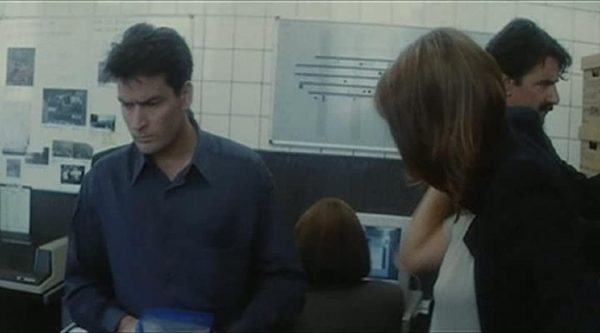
As the new century came in, inspired Pyun numbers were fewer and further between. His most memorable was an ill-fated ‘big’ movie with Steven Seagal. Ticker, another film that has a director’s cut lurking somewhere, ranks as not only one of Seagal’s worst films but Pyun too. It’s a mess that even relies on pilfering footage from other films during its run time (including part of a sequence from Dolph Lundgren’s landmine action drama, Sweepers). Pyun just couldn’t find enough investment to venture fully back to the kind of post-apocalyptic, high concepts he had been renowned for. He tried many times to put sequels and spinoffs into production for Nemesis and Cyborg. What remain are a few half-finished or unreleased films, often having been shot against a green screen (rather than the rugged, characterful exteriors of his originals).
Pyun continued, even well into degenerative dementia he’d begun to suffer from, to passionately try and make movies. He still sought to be uniquely Pyun-esque, to challenge himself. He attempted a couple of one-shot films. Invasion (Infection) actually received good reviews but didn’t find much of an audience. The Interrogation of Cheryl Cooper, a one-location, three-character, single-shot movie, still hasn’t had an official release (in spite of decent reviews during its festival run). He also made, unknown to many, a sequel to the cult film Streets of Fire, bringing Michael Pare back for Road to Hell. It took years to get official releases for the film and is still limited to a few territories. It’s wildly different and lacking the original’s budgetary gloss, but it is an interesting spinoff, to say the least.
In the end, a forty-year career as a director, saw Pyun produce a number of cult films. He created unique oddities and revelled most when he was given license to infuse quirky ideas into films with quirky characters. That fall from low budget to micro-budget proved difficult, and an experimental nature probably caused distributors to take a step back, particularly in the last decade, but in the 80s and 90s for certain, give Albert Pyun a few million dollars and he could create something beyond mere mortals’ imaginations. At his best, he created holy shit moments that will live long in the memory.
Tom Jolliffe is an award winning screenwriter and passionate cinephile. He has a number of films out on DVD/VOD around the world and several releases due out in 2022/2023, including, Renegades (Lee Majors, Danny Trejo, Michael Pare, Tiny Lister, Nick Moran, Patsy Kensit, Ian Ogilvy and Billy Murray), Crackdown, When Darkness Falls and War of The Worlds: The Attack (Vincent Regan). Find more info at the best personal site you’ll ever see here.


